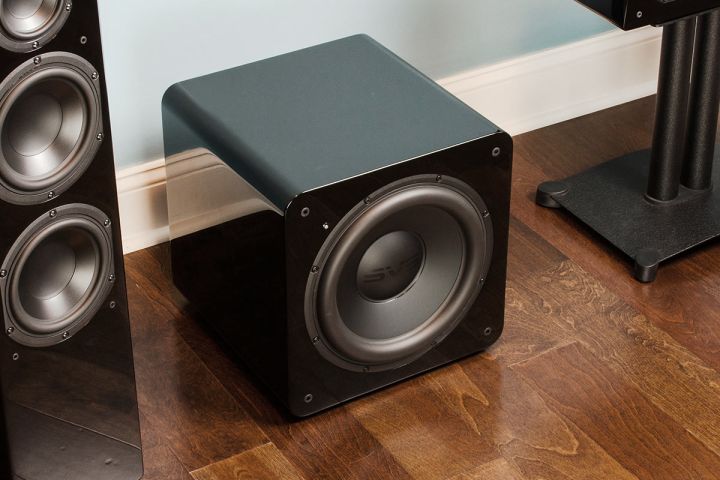Have you recently got a subwoofer to enhance the audio of your TV? You’re probably very excited to get it set up and working! Nothing’s better than amazing sounds the subwoofer can add to your media! However, before you get too excited, you’ll need to consider a couple of things.
For one thing, you’ll want to consider where to place the subwoofer and then how to connect it to your TV. These are the very issues we’ll cover in this article.
What is a Subwoofer?
A subwoofer adds more bass tones to your TV’s audio. Plus, they’re more efficient than the free-standing speakers that require huge drivers to produce the same types of sound. The subwoofer adds more depth and width to your system’s audio, which can be appreciated when listening to beautiful music or amazing movies.
Where to Place Your Subwoofer
Placing a subwoofer for the best performance is key to enjoying the best sound possible. When it comes to placing the subwoofer, most people believe that you’re hearing the sound produced by the audio system. While that’s true, what you’re really hearing is how the sound bounces around your room.
Everything in your room has an effect on the sound. This includes furniture, the type of fabrics used in the room (curtains, furniture, rugs & carpet), walls and even the windows. Bass waves, like those produced by your subwoofer, bounce all over the room. Then the reflect of everything in the room, so as they bounce all over, they also bounce back into one another. This creates one of two scenarios: standing waves or bass nulls.
Standing waves is an excess of bass energy and they are directed by the size of your room and the length of the sound wave. You’ll experience a “boomy” sound, or one that lacks definition. On the other hand, bass nulls create a dead spot. Here, the waves cancel one another out, creating the dead zone.
In order to create the best sound, your subwoofer needs to be in the right place.
- Corners: are usually not the best place for the subwoofer. This is because you’ll end up with too much base and it won’t sound good.
- Near walls: this is OK; however, the subwoofer should be placed at least 8-12 inches away from the wall.
- In the front: subwoofers work better in the front half of the listening space, near the front-channel loudspeakers. This works to lower timing delays and phase cancellation.
So, if your subwoofer doesn’t sound good in front, then you may need to redesign the layout of your room. This would be much easier than taking drastic, costly measures to add sound enhancements to the area.
In this instance, you may want to keep your subwoofer in the front, but then go around the room and find where the sound is best. That’s the spot where you may want to consider moving your couch or other types of seating to take advantage of the best sound possible. Setting the subwoofer in the right place will ensure you have cinema-quality sound, which will make your programming even more enjoyable.
How to Connect a Subwoofer to the TV
Your subwoofer has been placed, your room arranged, so now you’re finally ready to connect the subwoofer to your TV! There are three basic ways to connect the speaker to your TV.
Using a Converter
This is the method you’ll need to use if the port type is different between the TV and the subwoofer. The convert works to convert the signal into one that can be “read” by the subwoofer and the TV.
The first step is to connect the digital coax output to the TV. Next, you’ll need to connect the other end to the digital coax input cable of the converter. Then, you’ll need to plug one end f the HDMI cable to the convert, and the other and to the TV.
This may sound confusing, but it’s really very easy. If this doesn’t work, you mean need to check and redo the connections. Make sure each connection is in the right port.
Use a Direct Connection
For this type of connection, you don’t need any other devices to connect your speaker and TV. You start out by locating the audio output port on the TV. Then plug the HDMI cable into the TV’s port, and then connect the other end to the subwoofer’s audio input port.
That’s it! It’s that easy!
Use an A/V Receiver
If the first two connection options didn’t work, then you may want to consider this one. If you have an A/V system, then you’ll need an A/V receiver. This works to convert the signals and make them compatible for the TV and the subwoofer.
It will be necessary to make a direct connection with the TV and the A/V receiver first. You’ll need to connect the A/V receiver’s input port to the TV’s audio output. Then you’ll need to check the A/V receiver for the ports made specifically for subwoofers. When you’ve found this, then connect the A/V receiver and the subwoofer with an HDMI cable.
When this is all done, then turn on to see if the connection’s working. If not, then go back and make sure that all the connections are correct and that they’re connected tightly.
Summing It Up
The placement of your subwoofer is a great way to enhance the sound from your audio system. It can work to add more depth and definition to the sound, which ends up being closer to what the artist intended listeners to hear.
With the addition of a subwoofer, you’ll have a wonderful surround sound experience. One that will be about as good as at the movie theater.
Most of the time connecting your subwoofer to the TV will be pretty easy; however, in some cases, you may need to buy additional devices to make the connection work.
And remember that proper placement of the subwoofer is also important. The right placement will get you the best sound.






![YouTube SEO in 2024 [Definitive Guide]](https://getpixie.com/wp-content/uploads/2024/02/shutterstock_1684828252-1-150x150.jpg)








